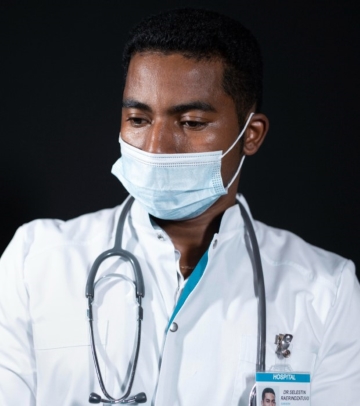Why Rotator Cuff Repair Surgery?
Rotator cuff repair surgery is recommended for individuals with symptomatic rotator cuff tears that significantly impact their quality of life and functional ability. Without surgical intervention, rotator cuff tears can lead to ongoing shoulder pain, weakness, and impaired activities that involve overhead movements or lifting. Rotator cuff repair aims to restore the integrity of the rotator cuff, improve shoulder function, and reduce the risk of long-term complications such as rotator cuff arthropathy or irreparable tendon degeneration.
Is Rotator Cuff Repair Surgery Necessary?
Rotator cuff repair surgery is considered necessary for individuals with symptomatic rotator cuff tears that fail to improve with conservative treatments such as physical therapy, corticosteroid injections, or activity modification. The decision to undergo surgery is made collaboratively between the patient and their healthcare team, considering factors such as the size and location of the tear, patient's age, activity level, and functional goals. While some small or partial-thickness tears may be managed conservatively, surgical intervention is often recommended for larger or full-thickness tears that significantly impact shoulder function and quality of life.
How Is Rotator Cuff Repair Surgery Done?
Rotator cuff repair surgery involves several key steps to reattach the torn tendon(s) and restore integrity to the rotator cuff. Surgeons typically use arthroscopic techniques, making small incisions around the shoulder joint to access the damaged tendon(s). Specialized instruments and sutures are used to mobilize the torn tendon(s) and reattach them to the humerus. Depending on the size and location of the tear, different repair techniques may be employed, such as single-row, double-row, or suture bridge repairs. Physical therapy is initiated soon after surgery to facilitate recovery, restore range of motion, and strengthen the muscles surrounding the shoulder.

“ Phasellus volutpat, metus eget egestas mollis, lacus lacus blandit dui, id egestas quam mauris ut lacus. Aenean leo ligula, porttitor eu, consequat vitae, eleifend ac, enim. Suspendisse potenti. In turpis. ”
What Happens After Rotator Cuff Repair Surgery?
After rotator cuff repair surgery, patients undergo a period of recovery and rehabilitation to regain strength, stability, and function in the shoulder. Physical therapy plays a crucial role in the recovery process, focusing on exercises to improve range of motion, strength, balance, and neuromuscular control. Patients are advised to follow a structured rehabilitation program under the guidance of a physical therapist to optimize outcomes and minimize the risk of complications. The success of rotator cuff repair depends on various factors, including the size and location of the tear, patient's age, activity level, and adherence to postoperative protocols. With diligent rehabilitation and appropriate care, many individuals can expect to regain function and return to their desired level of activity following rotator cuff repair surgery.


